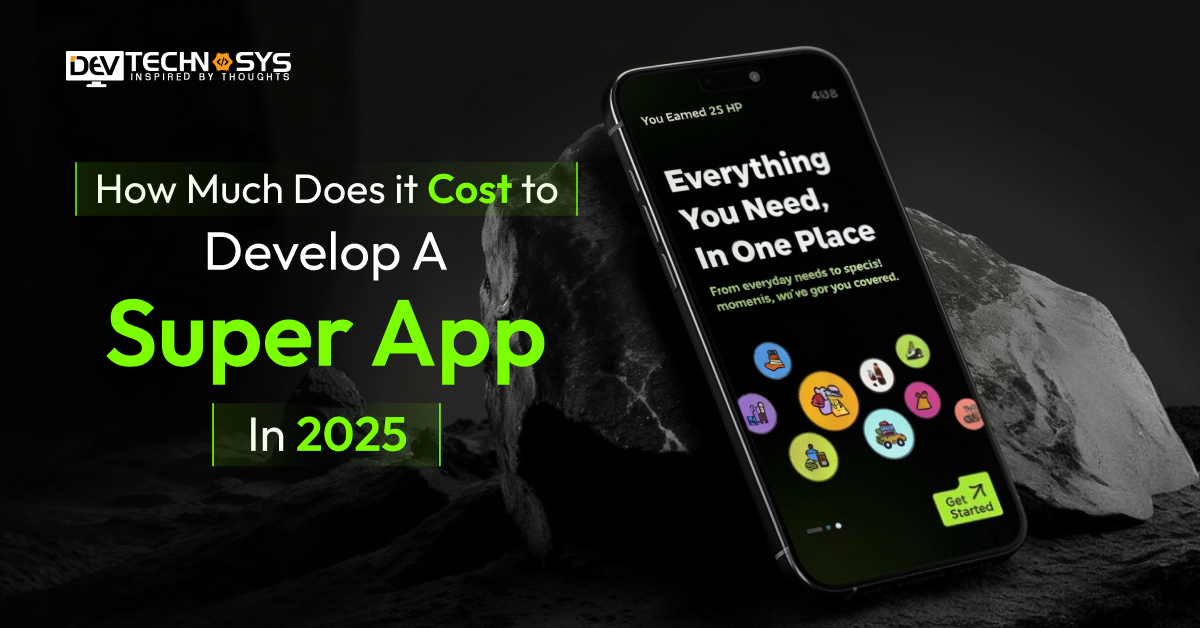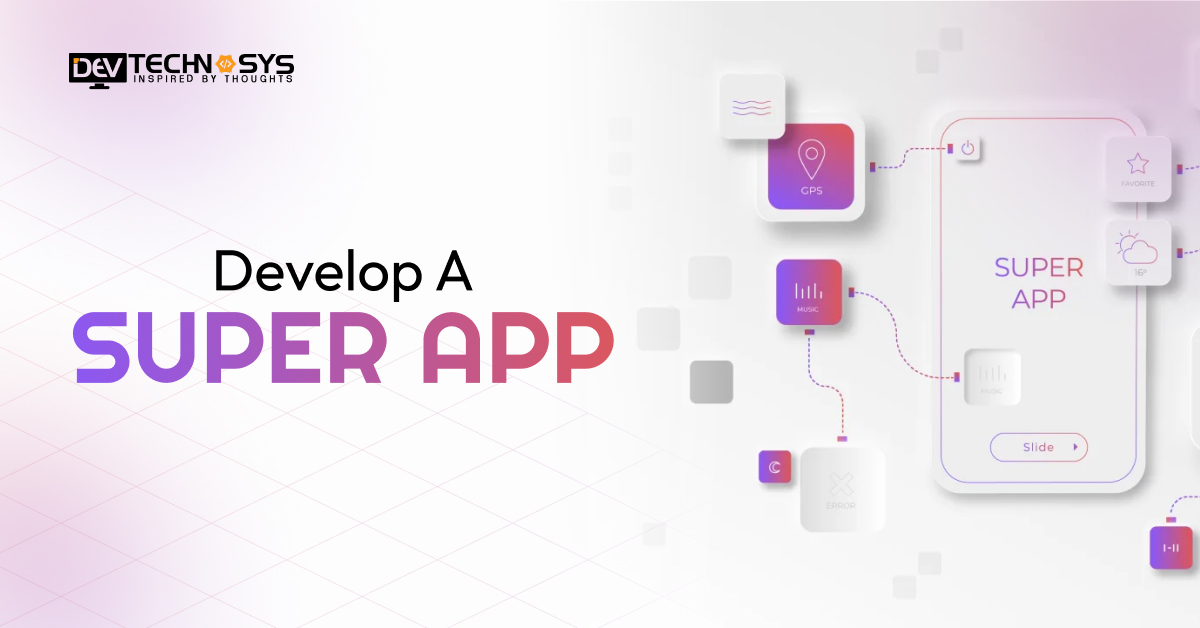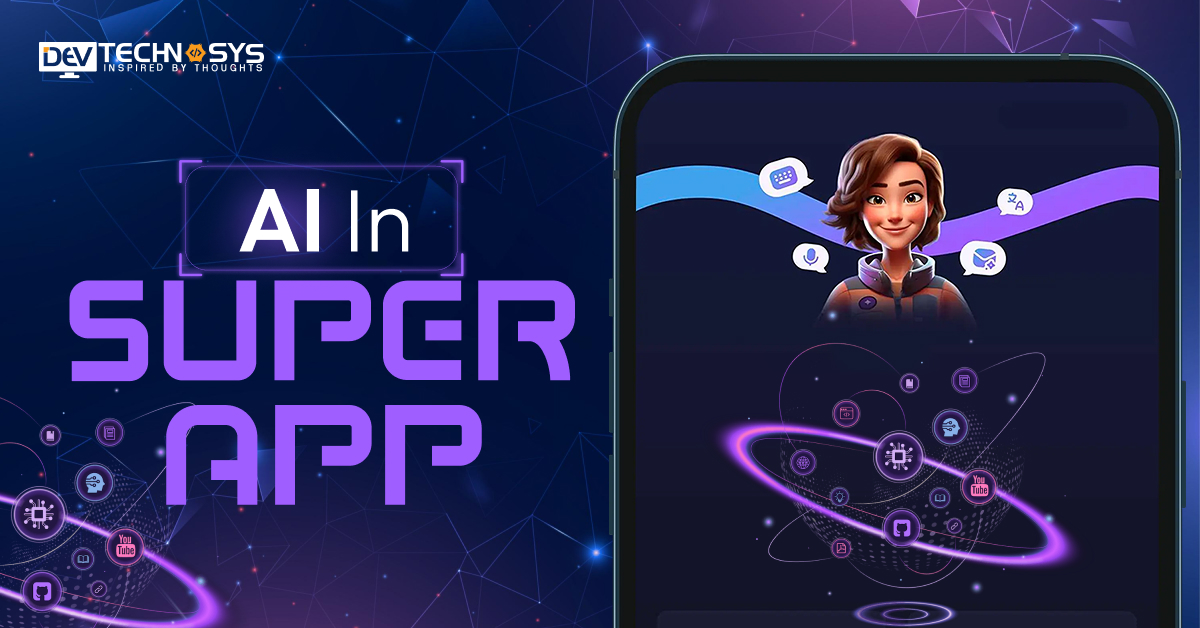Forecasts indicate that the eLearning industry will reach $325 billion by 2025. Edtech is the most lucrative investment sector. There is an increasing demand for educational mobile apps. Digital learning has allowed prominent EdTech brands such as Google Classroom and Khan Academy to showcase their capabilities.
If you are one of the people who are looking to learn the cost to develop an education app you have reached the right place. In this blog, we will provide you with an accurate cost to develop an education app with several quotations to it. If you are considering developing an educational app, it is important to understand market pricing.
The cost to develop an education app depends on many factors. These include the complexity of the app, its features, the platform it’s built on, and the expertise of the team developing the app.
This blog will provide a detailed breakdown of how much it cost to develop an education app. Let’s get started!
What is an Education App?
An educational app is a software application that facilitates learning and enhances educational experiences. They are usually installed on computers, tablets, or mobile devices and provide various educational tools and content. These apps can be adapted to different age groups and subjects, ranging from games for preschoolers to adult courses.

Apps for education often have interactive lessons, quizzes, and videos. They also include simulations and other features that engage and enhance the learning process. They can be used for formal education in schools and universities or self-paced informal learning. Apps for education have grown in popularity due to their convenience, accessibility, and ability to cater to individual needs and preferences.
What is The Accurate Education App Development Cost?
It can be difficult to estimate the exact cost to develop an education app since it depends on many factors, including app complexity, features, platform(s), as well as the location of the mobile app development company in UAE.
Still, the average cost to develop an education app varies from $8,000 to $25,000 depending on these factors. You can get a rough idea of the cost by looking at a table that breaks down the costs based on the different components. Remember that these are only approximate figures, which can change greatly depending on your needs.
Component |
Cost Range |
| Planning & Research | $2,000 – $5,000 |
| UI/UX Design | $10,000 – $30,000 |
| Development | $5,000 – $8,000 |
| Testing & QA | $3,000 – $7,000 |
| App Platforms | Varies |
| Features | Varies |
| Third-Party Services | $5,000 – $8,000 |
| Maintenance | $5,000 – $10,000 |
It’s best to contact on demand app development company in the UAE and ask for quotes. It is vital to know that you get in touch with the best education mobile app development company in dubai that specializes in app development. For the long-term viability of an app, it is also important to consider ongoing costs to develop an education app such as maintenance and updates.
Major Factors Determining Education App Development Cost
Now the time has come when you must know all of the factors that affect the overall cost to develop an education app. In this section will examine the main factors influencing the cost to develop an education app.
1. App Types and Complexity
The type and complexity of your app largely determine the cost to develop an education app. Education apps can be anything from simple quizzes to virtual classrooms or comprehensive learning management systems. If you want to build an educational app with basic features, it costs less to create than feature-rich interactive apps or highly specialized apps requiring sophisticated functionality, such as AI-driven personal learning.
2. Platform Selection
The platform you choose for your app will significantly impact the development costs. Building an app for one platform (iOS, Android) is cheaper than a cross-platform application that works on both. The choice of whether to develop native, hybrid, or web-based apps will also influence the cost. Native apps are more expensive due to their platform-specific requirements.
3. Design and User Experience
Your app’s success depends heavily on user interface (UI) design and user experience (UX). Planning, designing, and testing are all necessary to create an intuitive interface. The development of complex and visually appealing animations, interactive elements, and visually appealing designs can be more expensive because they require additional configuration and coding efforts.
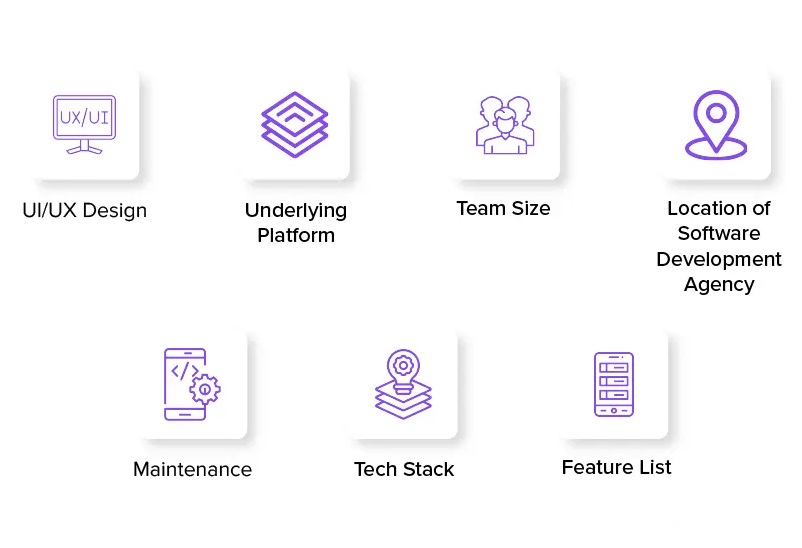
4. Content Development
The creation of educational content is a major cost driver. Creating high-quality texts, images, videos, or interactive materials for an app can be expensive and time-consuming. Customizing content for different languages, age groups, or subjects may be necessary. It will result in increasing the cost to develop an education app.
5. Features and Functionalities
The cost to develop an education app will be directly affected by the features and functions you choose to include. Features like real-time collaborative tools, assessment tools, and gamification will require more development resources and effort.
6. Integrating With Backend Systems
Integrating your education app with databases, backend systems, or external APIs can be expensive. It is important to build a scalable and secure backend infrastructure that can handle user data, authentication, and content delivery.
7. Security and Compliance
Compliance and security are important, particularly for educational apps that deal with sensitive data. Additional cost to develop an education app can be incurred by implementing robust security measures and encryption and complying with privacy laws (e.g., GDPR, COPPA).
8. User Authentication Management
Education App Like ABC World must have user authentication, management of profiles, and access controls. Implementing user profiles, secure login systems, and role-based control can increase cost to develop an education app. It is especially true if you require single sign-on or social media integration features.
9. Testing and Quality Assurance
Education apps must undergo rigorous testing and be subjected to quality assurance. Testing on different devices, operating systems, and screen sizes can take a lot of time. A dedicated QA from mobile app development services provider may be required. Testing costs and efforts will be affected by your app’s complexity and number of features.
10. Maintenance and Updates
You should also consider the ongoing costs of maintenance and updates after launch. Over time, bug fixes, performance improvements, feature enhancements, and compatibility upgrades with new OS versions may incur expenses. Providing a bug-free and smooth user experience is important for app success and user retention.
11. Scalability
If you expect a significant increase in the number of users, it is important to plan for scaling. It may be necessary to invest more upfront to develop an app capable of handling increased user load, but it can reduce future redevelopment expenses.
12. Project Management and Team
Costs are affected by the size and expertise of your Android app development company UAE and how you manage your project. High-level designers, developers, and project managers command higher rates. The choice of in-house or outsourced development, as well as a combination, can affect overall costs.
13. Validation of Market Research
Market research and validation can reduce costs over time. Understanding the needs and preferences of your target audience can help you avoid expensive changes or pivots in later stages of development.
14. Legal and Intellectual Property
Cost to develop an education app can be increased by legal considerations such as trademark registrations, copyrights, and licensing agreements. It is important to protect your intellectual property rights.
15. Marketing and User Acquisition
It is easy to overlook marketing and user acquisition costs, but these are crucial for an app’s success. Budgets are needed to build a user base and promote your app via various channels such as social media, advertising, and influence partnerships.
8 Cost-Saving Monetization Techniques for Education App Development
It can be rewarding to develop an educational app, but the costs are often high. You must keep costs down while implementing effective monetization techniques to make your educational app financially viable and profitable. This section will examine eight cost-saving strategies for monetizing education app development.
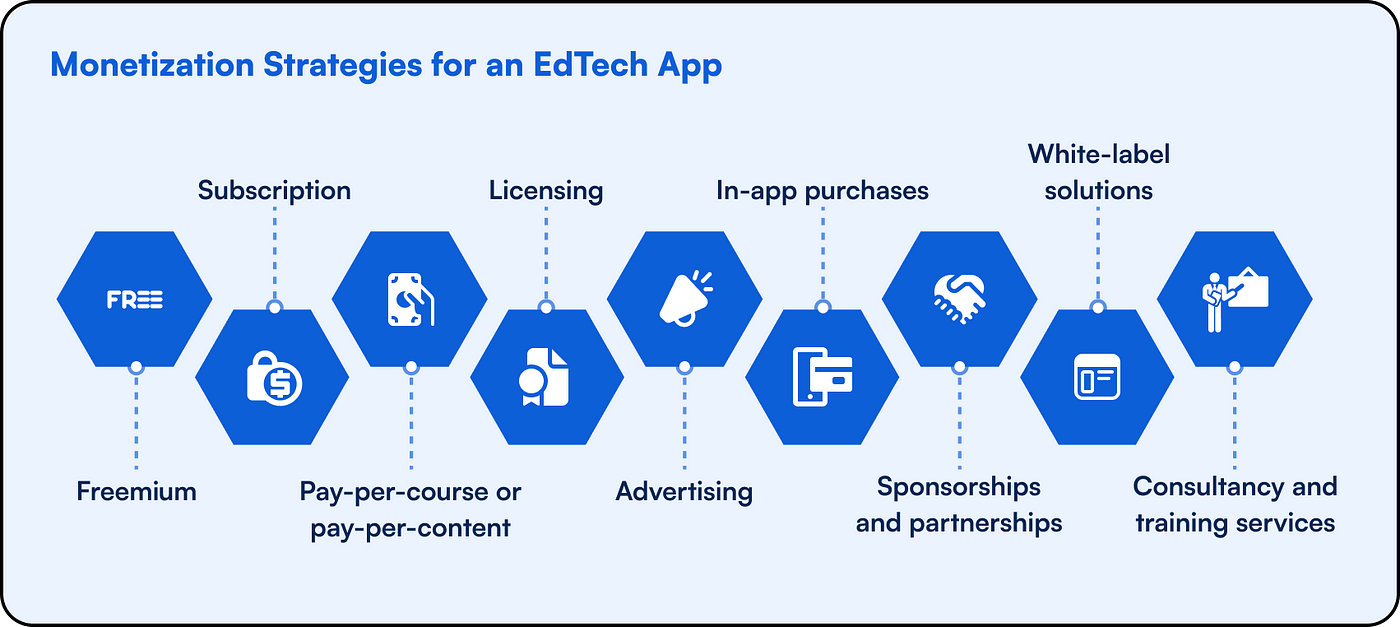
1. Freemium Model (Free plus Premium Features):
A freemium model lets you offer your app for free while charging for premium features and content. This model attracts more users and lowers the upfront costs. Users can choose to use basic features free of charge and upgrade for advanced features, extra content, or ad-free experiences. This strategy increases user engagement and generates revenue by a small portion of your existing user base.
2. In-App Advertising:
It can make money by incorporating targeted advertising into your educational app. Advertisers will pay you for displaying their ads on your app. Ads that are relevant to the audience will maximise your revenue. You can select from various ad formats depending on the design and flow of your app.
3. Subscripton Model:
Subscription plans are a great way to ensure your app generates consistent revenue. Subscribing monthly or annually allows users to access premium features, content, and an ad-free experience. Prioritize creating exclusive, high-quality content to save on cost to develop an education app. Consider offering a trial period for free to encourage users to sign up.
4. In-App Purchases (IAPs):
In-app purchases allow you to sell digital goods, courses, or other products in your education app Users can buy credits or make one-time payments to unlock content. You can reduce your cost to develop an education app by partnering with third-party content providers and sharing revenue. It will minimize the need for internal content creation.
5. Affiliate Marketing:
Affiliate marketing is a great way to monetize an app. Earn a commission by promoting their products and services in your app. Select affiliates who align with your app’s content and its user base for a seamless experience.
6. Crowdfunding & Donations:
Consider implementing donation or crowdfunding options if your app provides valuable content or offers services supported by a large user base. Encourage your users to donate funds to support the app. The benefits of user support, such as free content and exclusive features, can be highlighted. It can be a great way to cover the cost to develop an education app and foster community among users.
7. Sponsorships and Partnerships:
Look for partnerships or sponsorships from educational institutions, corporations, or organizations with the same target audience as your app. These partners may provide financial support for brand exposure, user data access (with consent), or exclusive content distribution. These collaborations can reduce marketing and edtech app development costs.
8. The Marketplace For User-Generated Content:
Allow users to sell or contribute their educational courses and content within the app’s marketplace. It will reduce content creation costs. Set up revenue-sharing agreements with content producers, giving them a percentage of sales. This method lowers the cost of content creation and increases your app’s functionality and user engagement.
How to Reduce Education App Development Cost?
It can be an exciting venture to create an educational app, but the costs are often high. With careful planning and strategic decisions, you can still make a high-quality app while reducing these costs. This section will provide several strategies and tips to help reduce the cost to develop an education app without compromising quality.
1. Plan Your Project in Detail
Before diving into development, spend ample time on planning. A well-designed plan will help you avoid pitfalls, define clear goals, and allocate resources effectively. What should you consider during the planning stage?
- Defining the Scope of your App:
Outline the features, functionality, and audience of your app. Be specific in what you’re trying to accomplish.
- Market Research:
Understanding your competitors’ unique selling points and the features of your app will help you make informed decisions. This information will help you to make an informed decision about the features that should be prioritized.
- Create a Road Map:
Create a detailed roadmap of development with deadlines and milestones. You will be able to stay on track and avoid expensive delays.
- Budget allocation:
Decide on a realistic budget, and then allocate your resources intelligently. Find areas where you can reduce cost to develop a mobile app without sacrificing the quality.

2. Minimum Viable Product (MVP) Development
Start by developing a Minimum Viable Product (MVP), which includes only the essential features. A Minimum Viable Product (MVP) allows you to quickly enter the market, collect user feedback, and refine your application based on actual usage. You can reduce your initial cost to develop an education app by focusing on the core functionality.
3. Open Source and Third-Party Tools
Use third-party open-source frameworks and tools to accelerate development and cut costs. You can, for example, use libraries such as React Native or Flutter to develop cross-platform applications, eliminating the need for separate codebases on iOS and Android. Consider using third-party APIs for authentication, payment processing, or analytics.
4. Outsourcing and Freelancers
Consider outsourcing certain parts of your development process or hiring freelancers to perform specialized tasks. It can be an effective way to hire dedicated developers without paying for a full-time team. To maintain quality, you should carefully screen and communicate with the educational app development company working on your project.
5. Agile Development
Use Agile methodologies such as Scrum and Kanban to improve flexibility and adaptability in the development process. Agile development allows you to change priorities in response to feedback and changes in requirements. It reduces the risk of late-stage costly changes.
6. Cross-Platform Development
Build your app using cross-platform frameworks like React Native, Flutter, or Xamarin. These frameworks allow you to write code only once and deploy it across multiple platforms. It saves time and cost compared to creating separate native apps for iOS or Android.
7. Cloud Computing and Server less Architecture
Use cloud computing platforms like AWS, Google Cloud, or Microsoft Azure to host and scale your app. Serverless architectures reduce costs by scaling resources automatically based on demand and eliminating the need to maintain dedicated servers.
8. Test Automation
Investing in test automation will improve your app’s quality and reduce the manual testing effort. Automated tools for testing can detect and report bugs early in the development cycle, saving money on later bug fixes.
9. Continuous Integration and Deployment
Implement CI/CD pipelines for automating the build, test, and deployment process. It will streamline development and reduce the risk of integration problems, saving time and money.
10. Iteration and User Feedback
Iterate your app according to the suggestions of users. This iterative development approach will help you focus your efforts on the most important features of your users and reduce the development of less useful or unnecessary functionalities.
11. Freemium Model
Consider using a freemium business model. It is where you provide a basic app free of charge and charge for additional features or content. It can help you gain a large user base without spending much on marketing.
12. Optimized Marketing
Invest in cost-effective marketing strategies, such as social media marketing, app store optimization, or content marketing. Concentrate on reaching your audience and measuring your ROI.
Final Thoughts!
In conclusion, the cost to develop an education app can vary significantly depending on various factors such as features, complexity, and platform. On average, a basic education app may cost around $8,000 to $15,000, while a more advanced app with extensive features could exceed $25,000 or more.
It’s essential to plan your budget carefully and work closely with education app development services provider to ensure your app aligns with your educational goals and provides a valuable learning experience for users. Remember, investing wisely in your education app can yield substantial rewards in the long run.
Frequently Asked Questions
Q1. What are the Key Factors Influencing the Cost to Develop an Education App?
The cost depends on features, complexity, platform (iOS/Android), design, and development team rates.
Q2. Is there a Ballpark Figure Cost to Develop an Education App with Basic Features?
Basic apps can cost around $8,000 to $20,000, but it varies based on your specific requirements.
Q3. How does the Choice of App Development Technology impact Costs?
Native apps are costlier than hybrid apps. Native apps can start at $50,000, while hybrid apps may cost around $20,000.
Q4. Do ongoing Maintenance and Updates Add to the Overall Cost of an Education App?
Yes, maintaining and updating an app can cost 20-30% of the initial development cost annually.
Q5. Are There any Hidden Costs to consider When Developing an Education App?
Yes, consider expenses for hosting, marketing, third-party services, and potential unforeseen development challenges in your budget.







